The electric vehicle market in Australia is expected to grow by approximately 22% annually between 2022 and 2027, which will represent an increase of nearly 71,900 electric cars on the roads of Australia by the end of 2027. With such a large demand of EVs, there will also be a large demand for devices that can power those cars, and that means a lot of EV chargers!
The process of installing a single EV charger is relatively straightforward as the steps and procedures are very similar in most cases, however, on some occasions, it can become challenging depending on the existing electrical infrastructure and the desired layout.

What Factors To Consider Before Initiating Your EV Charger Installation?
Before jumping into the installation process itself, it is important to properly analyse the product that you will be installing, the EV charger.
Charger Level and Power
The first factor that you must think of is the power rating that the EV charger will work with. This will vary accordingly to the charging level and model of the EV charger. Level 2 EV chargers are generally the preferred option for EV charging installations with power ratings going anywhere from 3.6kW to 9.6kW for single-phase and up to 22kW for three-phase.
Single-Phase/Three-Phase
Most properties will have a single-phase connection, however, some bigger homes may have a three-phase connection to cover their needs. It is important the EV charger matches the electrical house connection.
Tethered/Untethered
EV chargers are also sold under two configurations: tethered or untethered. Tethered EV chargers come with a cable connector that is already attached to the electric car charger and that always remains connected. The cable cannot be changed and has a fixed length.
On the other hand, an untethered EV charger does not include the cabling cord, therefore it can be purchased separately and matched according to the user’s needs.
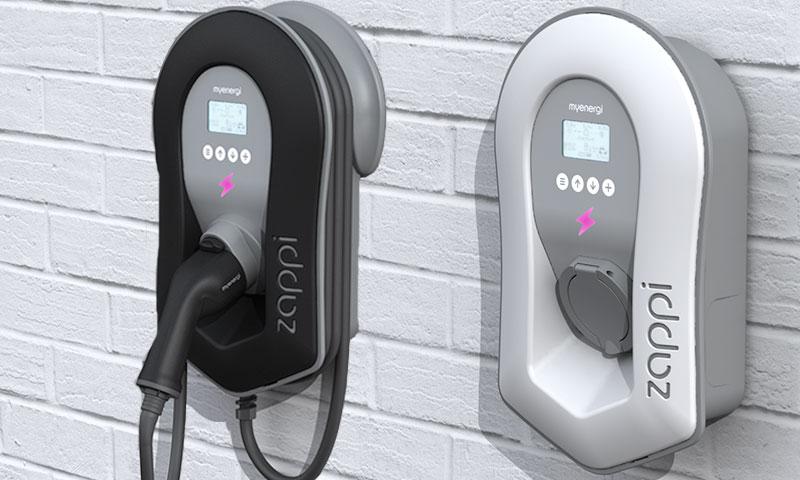
Smart Features
Some EV charger models will just charge the electric vehicle at a fixed power rate. However, smart level 2 EV chargers will include a set of additional features that make the charging experience better.
Evaluating the smart features or properties the EV charger includes will also give you a reference of what might be needed for the installation. Some of these features may include solar compatibility, bidirectional capability, power sharing and load management, real-time monitoring, among others.
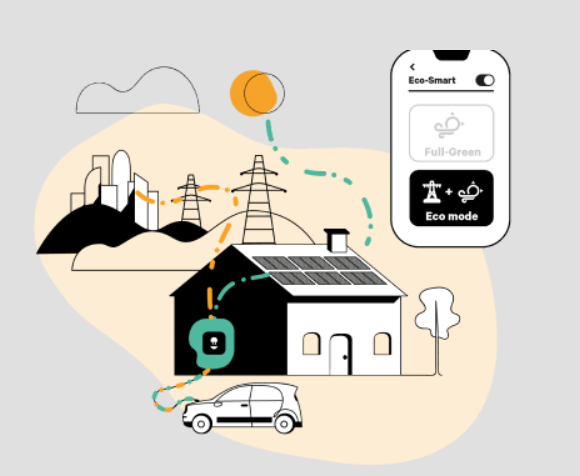
Protection Rating
Finally, determining whether the EV charger is rated for indoor or outdoor applications is also important to know at the time of selecting the EV charger location.
The 5 Steps for a Successful EV Charger Installation
Now let us get into the details that you need to keep in mind for the installation of an EV charger by following a 5 step process.
Step 1: Figure Out the Installation Location
The first step is always the site survey or site assessment. Here you must ask yourself, is the EV charger rated for indoors, or maybe outdoors as well? The answer will give you a clear idea of areas where you can install the EV charger in your house (generally inside the garage or on an external wall of the house).
Keep in mind that the way in which the car is generally parked as well as the charging port location in the electric car will be important considerations at the time to decide where to place the EV charger. The cable cord should easily be able to reach the charging port without too much mechanical stress on the cable. This is particularly important for tethered EV chargers.
Another factor is that the EV charger should be located as close as possible to the service panel or consumer unit. This also saves on costs.
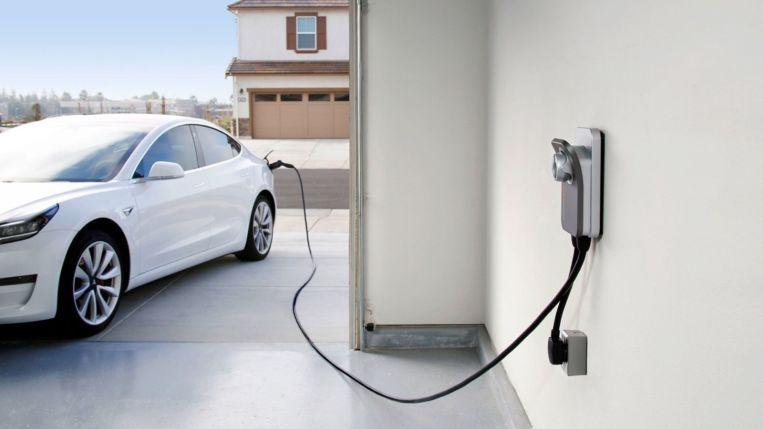
Step 2: Analyse Existing Electrical Infrastructure
It will be important to verify what is the cut-out fuse rating that the Distribution Network Operator has installed at the house. For residential properties, it is typical to find 60A to 80A fuse ratings and in some cases a 100A fuse. This is an important parameter to keep in mind as it will represent the maximum load that the house electrical system will be able to take, including the EV charger.
Next, you must inspect the consumer unit. Here you must check if there is any spare way on the consumer unit available for adding the EV charger breaker. Most level 2 EV chargers will need a 30A or 40A circuit breaker that is able to allow safe pass for the current demand of the charger.
Also, verify if the consumer unit also includes Residual Current Devices (RCD) as well as a Surge Protection Device (SPD) that is essential to ensure the safety of the EV supply equipment.
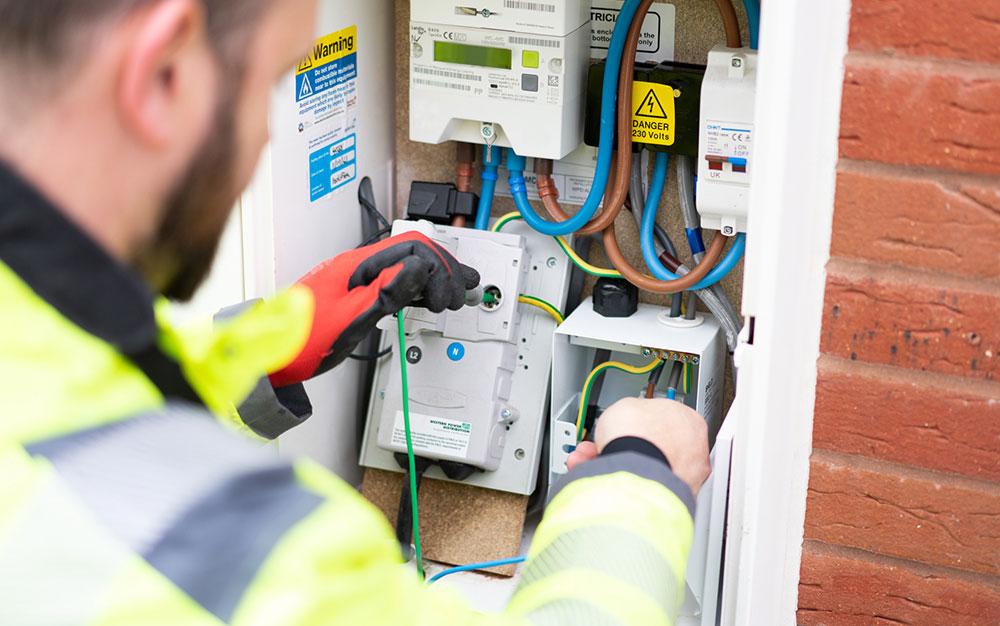
Step 3: Perform Electrical Calculations
Case: Existing Consumer Unit Works for EV
The next step would be to develop the calculations to add the EV charger. That is selecting the proper wire according to amperage and voltage drop considerations to connect the EV charger to the breaker.
The hardest thing in this process may also be to define the route for the cable to go from the EV charger location to the consumer unit. In some cases, it may be straightforward if the consumer unit and the EV charger are right next to each other, but in other cases selecting a route that complies with safety parameters can become challenging. This will be important to determine the length and the additional conduit required.
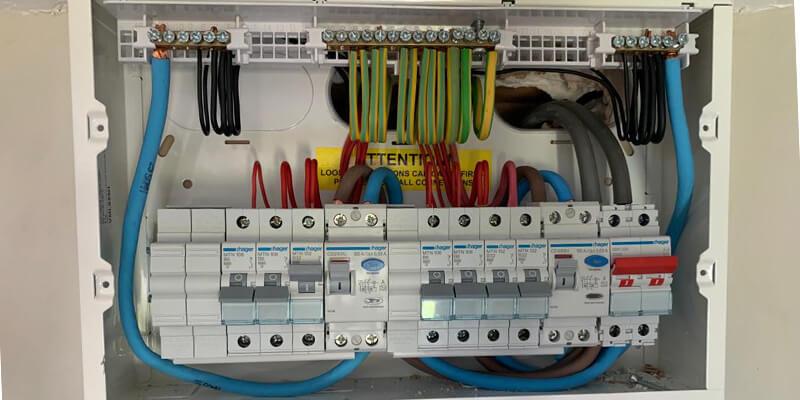
Case: Existing Consumer Unit Cannot Accommodate an EV Charger
However, if the consumer unit does not have the capacity to accommodate an EV charger, then you will need to evaluate other alternatives.
One of the most common is to add a separate small consumer unit only for the EV charger. This is useful when the mains switch and cut-out fuse have enough electrical capacity.
If the fuse does not have enough electrical capacity, there may be two alternatives to evaluate. One of them is to upgrade your cut-out fuse rating by requesting an upgrade to the utility. The other alternative, will be to consider load management options.
Many EV chargers will include some sort of load management feature such as power sharing or load management which will allow you to limit the maximum power demand that the EV charger can draw. By establishing a fixed maximum value that fits within the capacity of the electrical system you will be able to successfully install the EV charger while saving hundreds of dollars on a consumer unit upgrade.
Regardless of your particular case, make sure that the installation is safely bonded both to the water and gas pipe system if any.
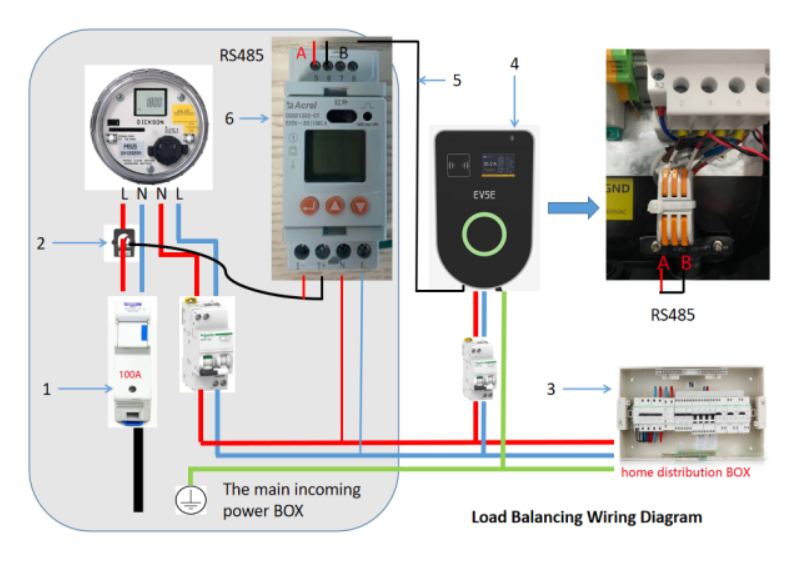
Step 4: Apply for Permits
The next step is to apply for permit plans to the local Distribution Network Operator (DNO). This is especially required whenever you need to upgrade the cut-out fuse rating. You may also need to apply for permits to the local municipality. This will involve including a single-line diagram of the electric vehicle supply equipment and a site plan indicating the location of the EV charger.
Step 5: Installation
After figuring out all these previous steps, you will be ready to perform the EV charger installation, which can be broken down into the following main stages.
- Identify the wiring route on site from the EV charger desired location to the consumer unit. Make the necessary marks, indications and measurements.
- Go to the electricity metre box and turn off the main switch. Make sure that in case you need to get the cut-out fuse upgraded, this has already been done by the utility.
- Get to the consumer unit and make the arrangements to include the circuit breaker of the EV charger into the consumer unit. This stage will be ultimately related to the approach that you need to go with according to what was explained in step 3. Always perform an electrical safety check to make sure that the consumer unit is isolated before starting to work on it by using an electrical tester. Make sure to label everything properly after finishing.
- Perform the drilling, wiring and construction job required to run the cable from the consumer unit to the EV charger location. Make sure to use proper wiring management techniques and tight the cables properly to the wall structure.
- Attach the EV charge by drilling a couple of holes and mount the EV charger on the wall by using the bolts and screws that will come with the product. Make sure to use a level tool to keep the EV charger straight.
- Put on the enclosure for the EV charger by using the bolts and screws included in the product.
- Turn the main switch back on.
- Run the commissioning procedure for the EV charger that will be found in the manual.
- Now the EV charger will be all set!
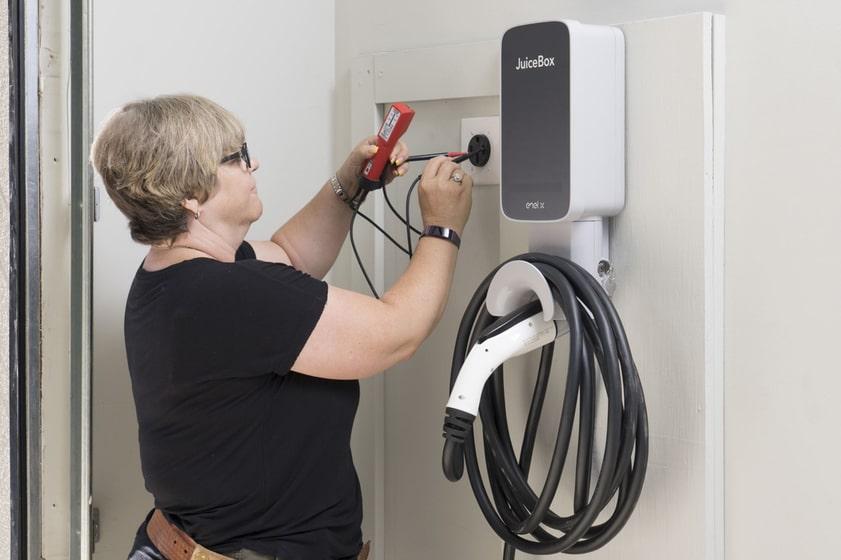
Become a revcharge installer today.
We take the hard work out of finding new customers, give you the training and ongoing support to install home EV chargers.
- Detailed Quoting Done For You. No Surprises!
- Marketing & Admin Done For You
- Training & On-call Support
- Join A Growing Community
Get started here today!